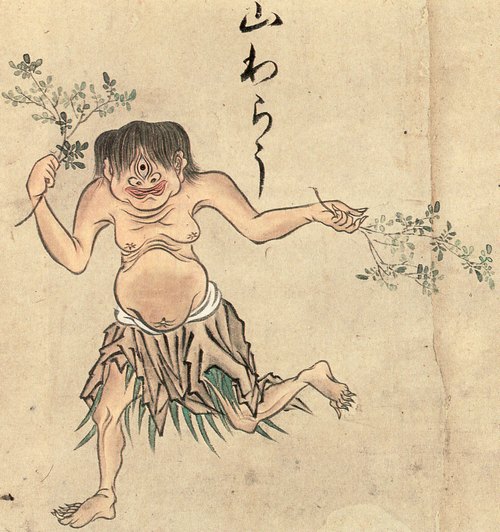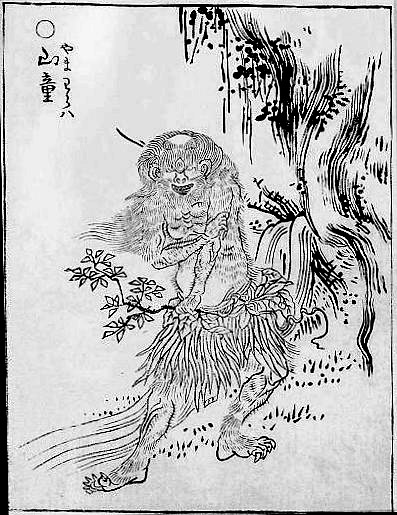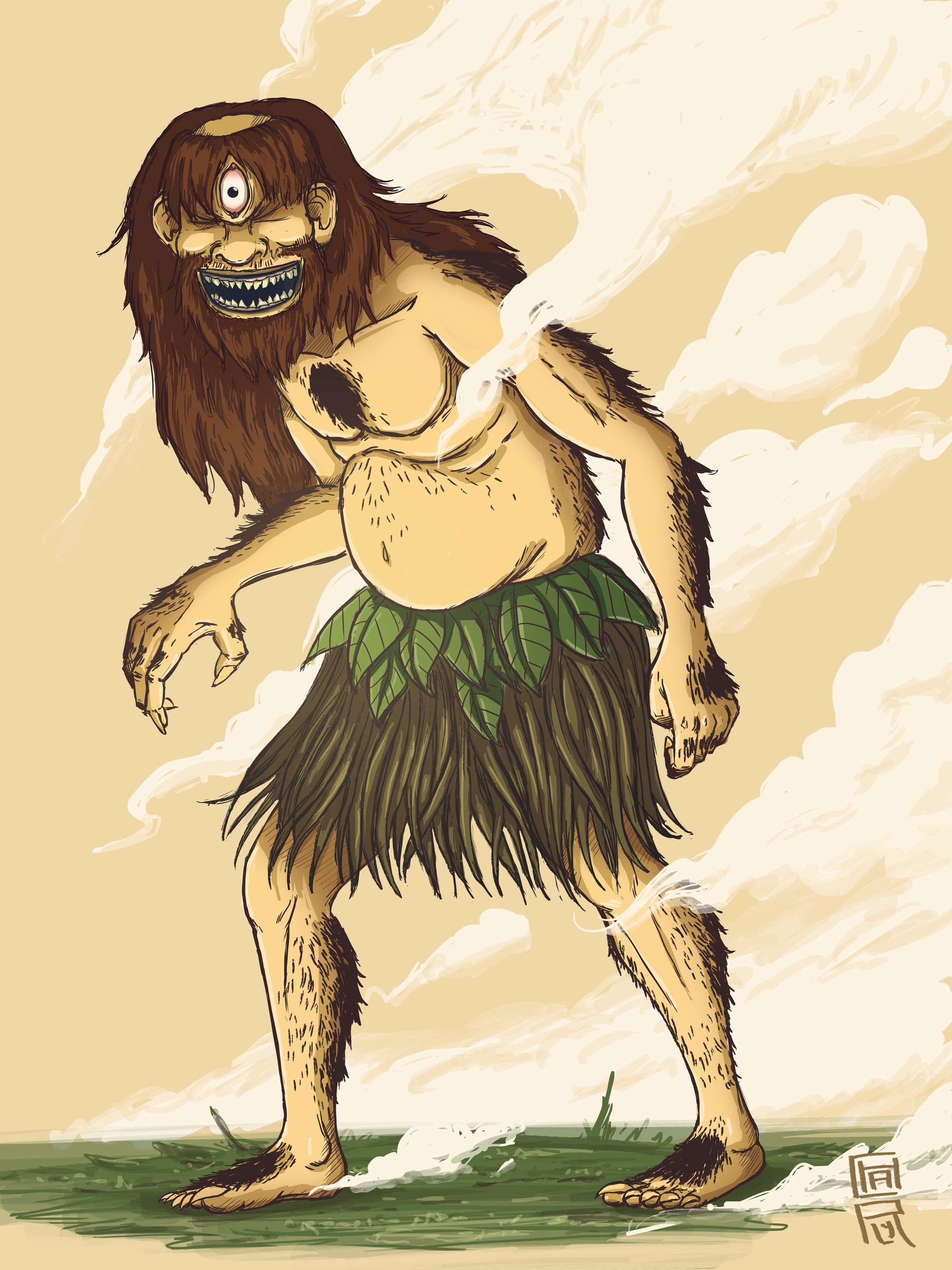
The “Mountain Child” and his connection to the Abominable Snowman
The Yamawarawa is known as “mountain child”, according to Kenji Murayama, and there are multiple legends about this creature, which bears some similarity to the Abominable Snowman. Its graphic representation, however, more closely resembles a European cyclops.
These tiny creatures resemble ten-year-old children. They have long brown hair and a thin layer of light hair covering their bodies, but their most distinctive feature is the only eye they possess on their forehead. They are masters in the art of imitation, being able to reproduce sounds such as falling rocks, wind, dynamite, tools and can even learn human language and sing songs.

The antics and skills of the Yamawarawa
The yamawarawa helps woodcutters by carrying logs for rice or fish, but if unsatisfied, it becomes angry. He is also said to possess an exceptional talent for singing and to enter the bathing tubs in the dwellings without permission.
Like the Kappa, the Yamawaro dislike horses and cows, and attempt to attack them when they encounter them. They are passionate about sumo and surpass humans in this discipline. They also enjoy sneaking into homes for naps and bathing, leaving bathtubs full of hair and dirt.

The connection between the Yamawarawa and the kappa
In Kumamoto, it is believed that the yamawaro and the kappa (or garappa) are actually the same yōkai that takes different forms. During the cold months, these creatures live in the mountains like yamawarawa, while in the warm months they inhabit lakes and rivers like kappa or garappa. Every year, with the arrival of the equinox, all the kappa of the country are transformed into yamawaro and migrate en masse from the rivers to the mountains.
During their migration, if the yamawaro encounter houses, they could cause damage such as holes or breaks by seeing their path blocked. For this reason, the villagers used to leave the doors open so that they could pass unhindered. Those who witness the migration of the yamawaro in spring could be affected by deadly diseases.
If you want to read more articles like this, click here
